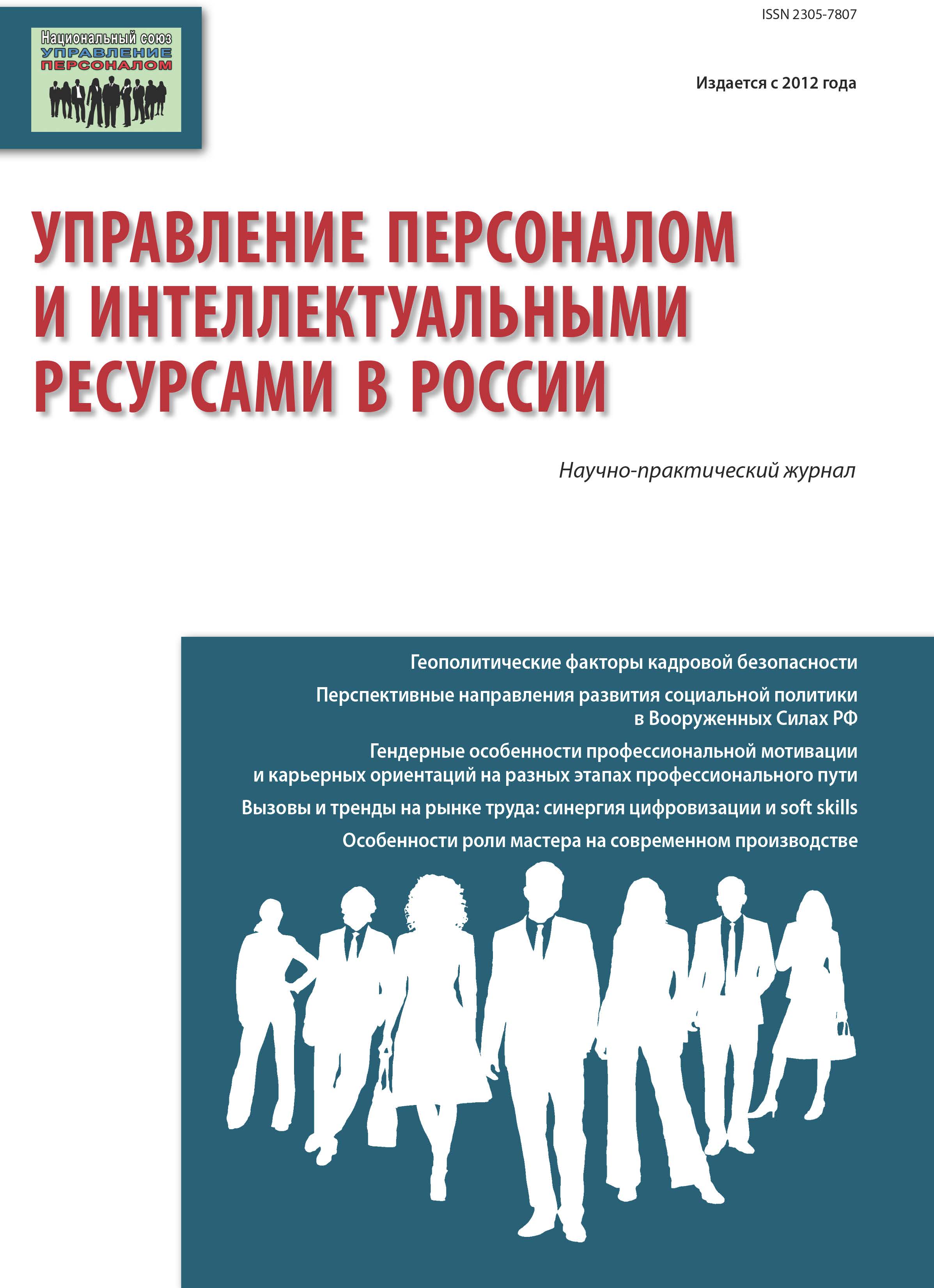The author discusses a technology for shaping personal management system with a nested technology of goal setting for the organization as a whole and its personnel management in particular. Social goal receives particularly intense attention and is considered from the two points of view — administrative and that of an employee to be hired. Dual nature of the social goal necessitates the search for compromises between the parties involved, which in turn, helps to create needed functional subsystems and eventually, — to develop optimal personnel management system for the organization concerned.
mechanism, system goals setting, personnel management system, social goal, to determine functions, function al subsystems.
TECHNOLOGY OF GOAL-SETTING FOR THE ORGANISATION AND PERSONNEL MANAGEMENT SYSTEM
An organisation aims at specific end states or desired outcomes it would like to achieve. Development of the organisational aim is a rather difficult and labour-consuming task, involving the method of the objective tree. As a rule, it includes the overall aim and goals of the lower level. Overall aim can change depending on the economic, market and organisational environment. In any case, all aims can be divided into the following categories on the basis of the requirements of the function and goal model of the organisation management system: related to research and technology, production, economic, commercial, social.
In the particular conditions of Russia’s economy development — transition to the market relations — the economic aim can be most feasibly considered as the overall one.
The economic goal is to gain profit from sales of goods or services in a certain volume and with the required quality. The goal related to research and technology is to ensure the required scientific and technical level of products and services, as well as R&D accompanied by ongoing increase in labour efficiency based on new technologies. The production goal is to secure product output in the planned volume and services of the required quality with smooth production flow. The commercial goal is to ensure sales of products and services, as well as results of R&D within deadlines. The social goal is to provide the organisation with competitive employees, ensure their efficient use, professional and social development.
A tree of objectives can be made for each of these goals, but it is out of the scope of this article, which dwells on the description of the social goal, for which the system of personnel management is designed.
The social goal is traditionally considered in two aspects: 1) position of the employer’s administration; 2) position of the employee. To achieve the overall aim — “Provision of the organisation with competitive employees, their efficient use, professional and social development”– the employer’s administration sets goals of the first, second, third levels etc.
Goals of the first level are shown in Fig.1. They include: HR planning and marketing, recruitment and staff records, organisation of employment relations, ensuring proper working conditions, ensuring personnel development, personnel motivation and incentives, social development of the staff, development of organisational management structures, legal support for HR management, information support for HR management.
Goals of the second level can be exemplified by decomposing the first-level goal “Ensuring personnel development”: personnel training, retraining and advanced education, induction and adaptation of new employees, assessment of candidates for vacancies, personnel certification, business career implementation, establishment of a system of promotion, talent pool management, patent, innovation and invention management, intellectual deliverables achievement.
Third-level goals can be shown by decomposing the goal of the second level “Personnel training”: identification of the training need, allocation of training funds, development of curricula, development of training programs, organisation of the training process, assessment of training.
Employees joining the organisation also set their own goals in accordance to their needs (motives). Fig.1 shows the interaction between the goals of the employer’s administration and those of the employee. Let us consider their interrelation system in greater detail.
1. Ashirov D.A. Trudovaya motivatsiya: Ucheb. posobie. M.: Velbi: Prospekt, 2005.
2. Egorshin A.P. Upravlenie personalom: Uchebnik. 6-e izd. N. Novgorod: NIMB, 2009.
3. Kibanov A.Ya. Razvitie teorii i praktiki upravleniya personalom organizatsii (istoricheskiy vzglyad). Upravlenie personalom i intellektual´nymi resursami v Rossii. 2013. № 3 (6). S. 8-12.
4. Maslov E.V. Upravlenie personalom predpriyatiya: Ucheb. posobie / Pod red. P.V. Shemetova. M.: INFRA-M; Novosibirsk: NGAEiU,1999.
5. Upravlenie personalom: Entsiklopediya / Pod red. A.Ya. Kibanova. M.: INFRA-M, 2010.
6. Upravlenie chelovecheskimi resursami. Entsiklopediya / Pod red. M. Pula, M. Uornera. SPb.: Piter, 2002.
7. Buhner R. Personal - Management. München, 1998.
8. Edvinsson L., Sullivan P. Developing a model for managing intellectual capital. European management journal. 1996. Vol.14. № 4.
9. Storey J. Developments in the Management of Human Resources. London: Blackwell, 1992.
10. Meskon M.Kh., Al´bert M., Khedouri F. Osnovy menedzhmenta: Per. s angl. M.: Delo, 2000.
11. Maslov A.N. Theary of Human Motivation. Psychological Review 50 (1943).
12. Lucas H.C. Information system: Concepts for management. N.Y.: Mc Graw Hill, 1982.
13. Taylor F.W. Principles of Scientific management. F.W. Taylor. N.Y.: Dover Publications, 1997.






